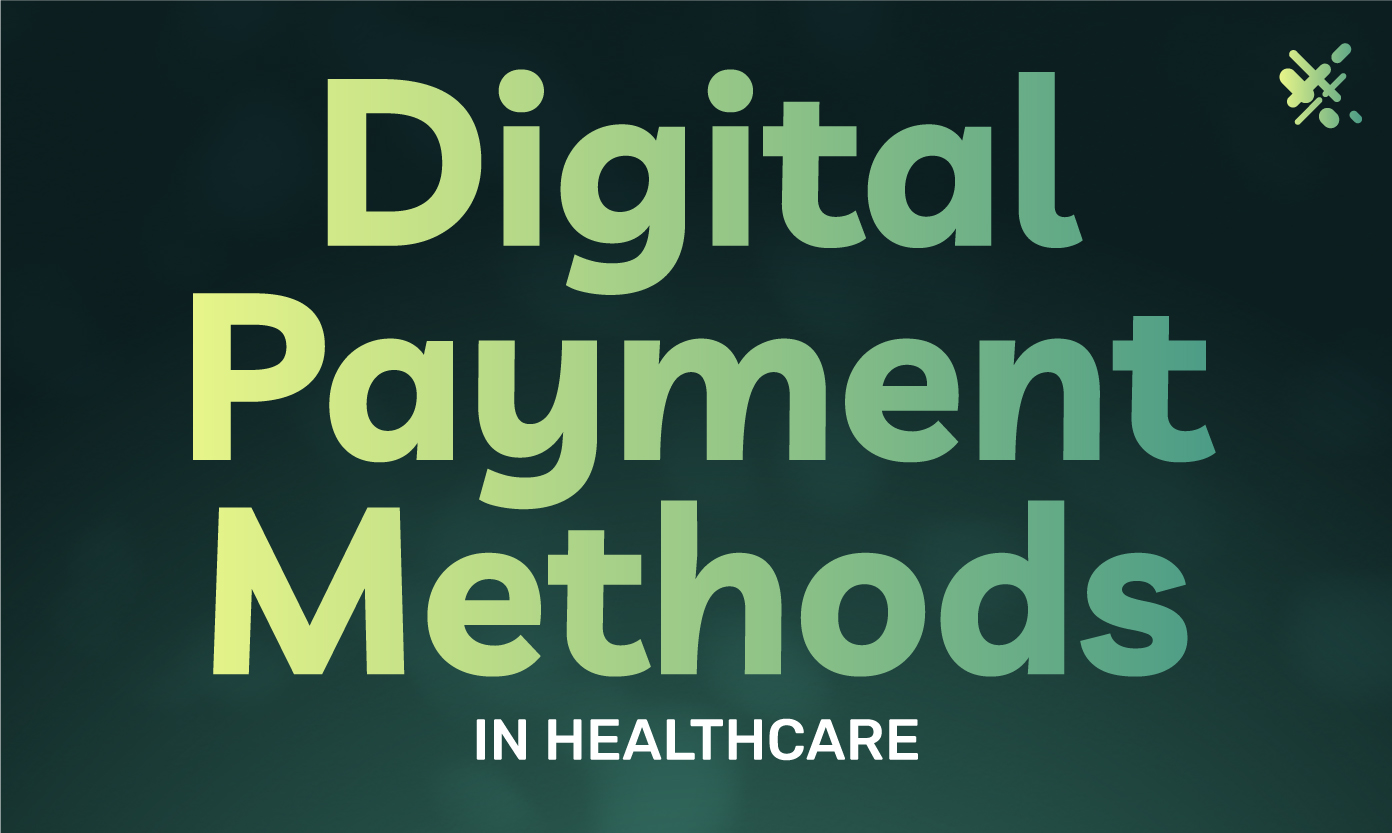As more aspects of our lives go digital, so must the way we look at patient interactions. A key component of that interaction is how patients choose to make payments. As with most other aspects of modern life, many payment methods have gone digital. And these digital payment methods have drastically changed in the last few years.
For many businesses, technology is changing on a daily basis, and it can, at times, feel overwhelming to keep up. This can be especially true for healthcare facilities. But, many of these changes open up new opportunities for healthcare facilities to explore new efficiencies and improvements in patient experience.
However, some patients may not be up to speed on these new digital payment methods. This can create issues that counteract the possible efficiencies these technologies promise.
The key to solving this digital payment adoption problem is patient education and helping patients get on board with newer payment technologies to help your healthcare practice operate more efficiently, lower labor costs, and improve patient experience.
Below, we’ll dive deeper into payment technology surrounding healthcare and how to bring patients up to speed for easier adoption and a better experience overall.
Benefits Of Payment Technology In The Healthcare Industry
It’s no secret that finding the right people and talent to help run a healthcare facility is becoming more difficult. Most businesses are experiencing a tight labor market, which has increased labor costs for healthcare businesses and has caused staffing shortages in many cases.
This means many healthcare businesses need to look toward technology as a solution. With the right technology implementations, healthcare businesses can do more with less.
Billing and payments are a labor-intensive part of any healthcare business, so any way to streamline this process can help alleviate labor issues and significantly lower costs when done correctly.
Digital payment methods are critical when healthcare businesses want to upgrade and streamline their billing and payment system.
The goal is to add as many payment options as possible so patients can use their preferred payment method. These payment options allow patients to pay how and when they want. These payment technologies are also heavily automated and geared toward self-service.
Patients can receive invoices and bills automatically through a variety of methods and then choose the payment method or portal that works best for them. This is done through integrated technologies that match your billing system with various payment tools. The patient then completes their payment independently with no labor or staff resources used during the process.
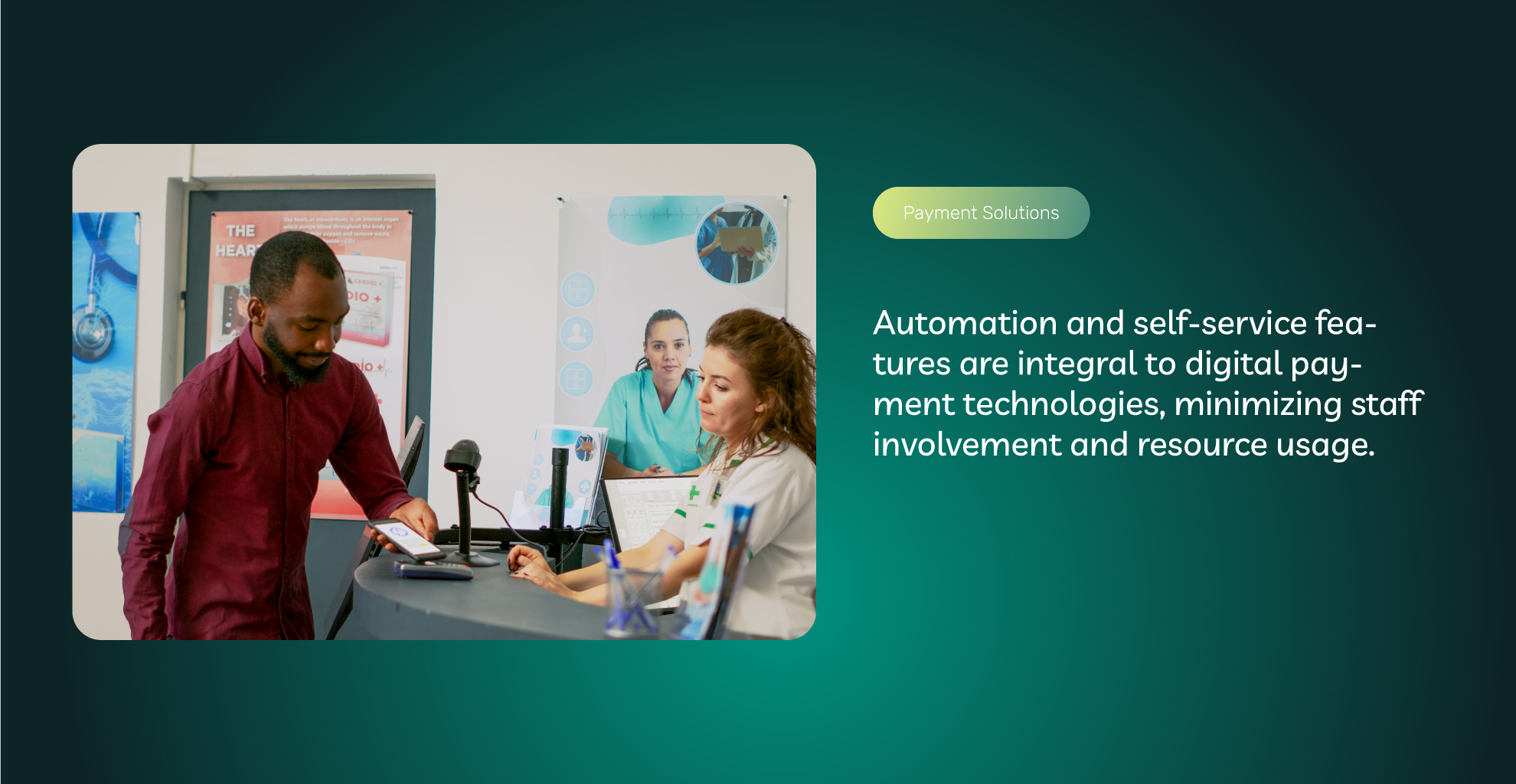
Improved Patient Experience
Implementing new digital payment methods isn’t just about cutting costs or improving efficiency. It also greatly enhances the overall patient experience.
For starters, convenience and more ways to pay make it easy for patients to pay on time and manage their healthcare costs. Patients are no longer locked into office hours to learn about their outstanding balance or other payment issues.
Every medical practice is focused on patient experience, and when it comes to medical care, most medical professionals can handle that area themselves. But when it comes to billing and payments, some practices can sometimes fall short as this requires different expertise.
Implementing trusted payment technologies is one of the easiest ways a medical practice can bridge this gap and improve patient experience when paying for medical services.
Digital Payment Methods And Registration For Easier Onboarding
Digital payment technology and registration can go hand in hand to help streamline the onboarding process. Manual patient onboarding in the office is often time-consuming and slows down the entire workflow of the facility.
Digital onboarding can be matched with payment technologies so patients can onboard digitally and enter their necessary payment information or preferences. This significantly speeds up office workflow and creates a much faster experience for the patient when they arrive for their appointment.
When the appointment is finished, their payment information is already set up, and they can receive customized billing messages through their preferred method of communication, such as SMS or email.
The benefits of this type of payment implementation are three-fold.
- Patients enjoy a much faster appointment where they spend less time onboarding and more time with their healthcare provider.
- The healthcare staff spends less time doing repetitive manual onboarding or invoicing, allowing staff to spend more time on much more important tasks related to patient care.
- Practices get paid faster due to increased payment options, and patients can better manage their healthcare expenses.
Attract Younger Tech Savvy Patients
Many younger patients seeking primary care doctors or specialists may base part of their decision on how easy they feel the onboarding process is and how easy making payments is.
A practice that touts newer technology can be attractive to many new patients. It can also keep patients from leaving due to a perceived lack of options regarding billing or payments.
This behavior will likely only increase as more age groups and different demographics adopt this technology.
So, for a practice that is newer or looking to grow, this can be a way to make your practice stand out and attract new business that other practices may be losing out on.
Common Digital Payment Methods To Improve Customer Experience
While there are a host of payment technologies and integrations that improve patient experience, there are a few key areas and technologies that have the most impact.
SMS Payments
SMS payments and text-to-pay are a type of integrated payment where patients receive a unique link or QR code via their mobile device, usually a text message. This link then takes them to a personalized page where they can make their payment and perform other billing functions.
They can perform all these actions directly from their mobile device, and some patients are already comfortable with this payment method.
This entire process is automated with no intervention from the healthcare facility staff. This saves time, increases payment compliance, and gives patients more options and flexibility to make payments.
With the right implementation, this is also 100% HIPAA compliant and secure.
It is important to note that text-to-pay messages require an opt-in, which users can give during onboarding. Billing messages and promotional messages need different opt-ins and consents. So, if patients only consent to billing messages, ensure not to include any promotional messages in those communications.
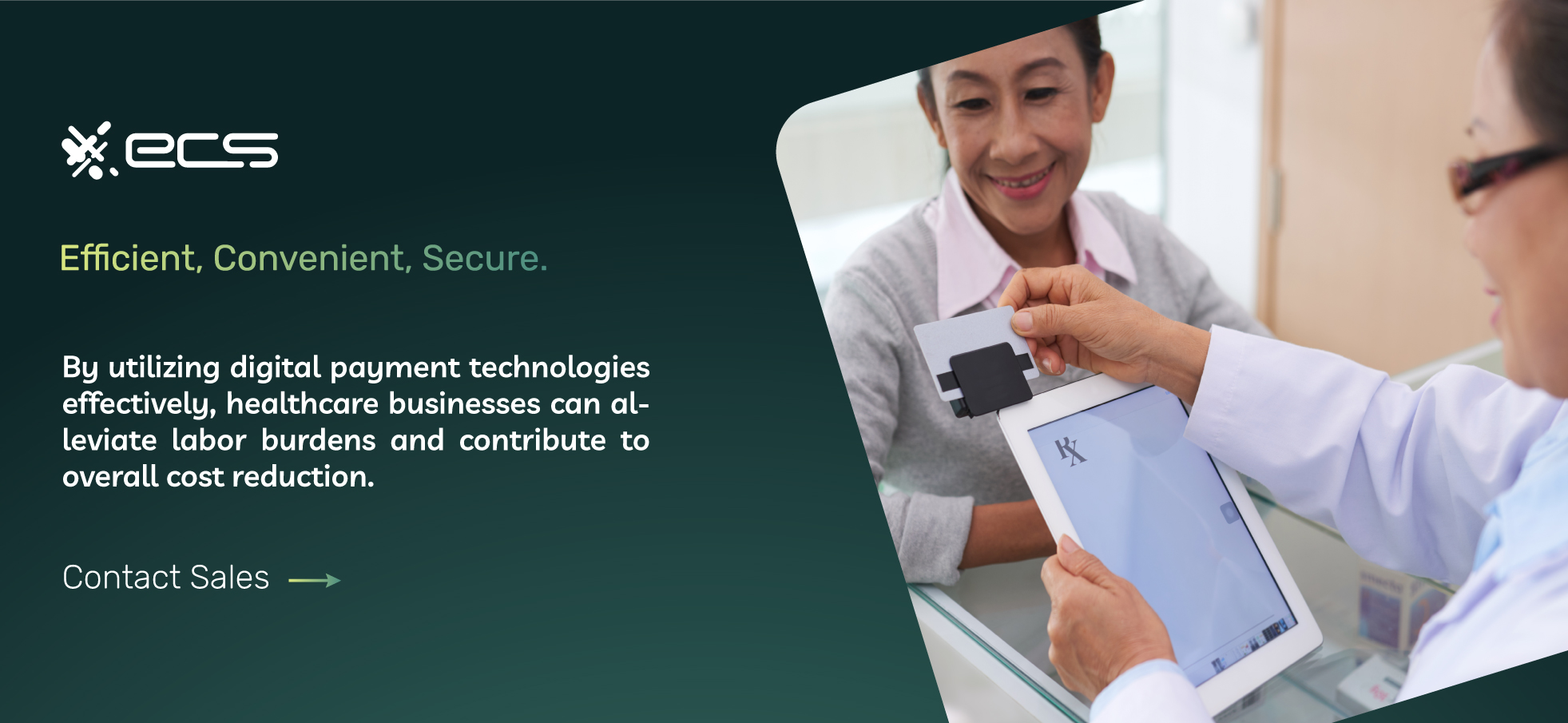
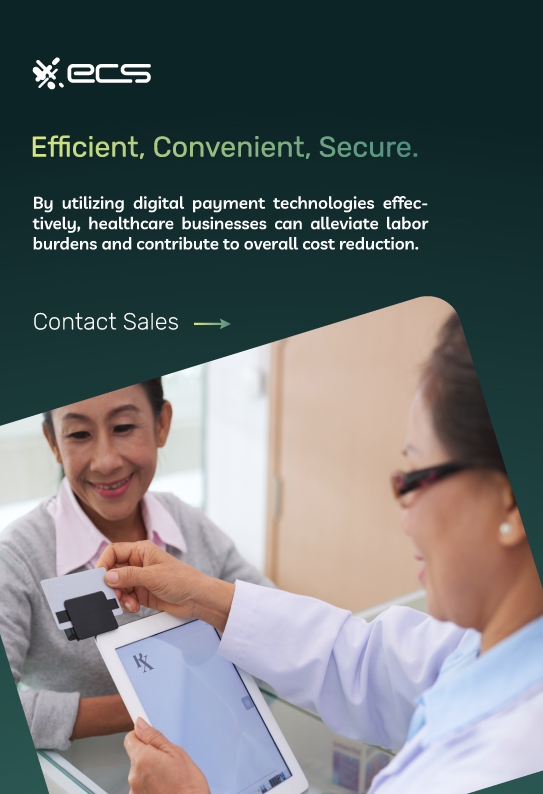
Card On File and Vaulting
Streamlining payments can involve storing billing information on file so patients don’t have to enter it each time they make a payment.
Many healthcare-related services include installment plans or recurring payments. Facilities can send a simple link, and with securely stored customer information, the patient only needs to authorize the charge by entering basic information.
Storing billing information locally does have certain security responsibilities that can come with it. However, healthcare companies can take advantage of tools offered by their payment processor or payment gateway to help alleviate this.
Many payment gateways offer a way for merchants to “vault” customer billing information. This means the gateway secures all patient payment information on its servers. The payment gateway is part of the credit and debit card processing network and is highly secure.
All data is tokenized, meaning the actual data is not sent back and forth. Instead, the gateway creates a digital token for each transaction. The token is discarded once the transaction is complete, and the customer data remains safe. This highly secure billing technology is fully HIPAA compliant when properly implemented.
If you want to learn more about these features, contact one of our healthcare payment processing experts at ECS Payments. We can help you take advantage of the latest payment innovations to improve patient experience and reduce costs at your medical practice.
Deferred Payment Plans
If you’ve made an e-commerce purchase of any kind recently, you’ve likely seen advertisements for buy-now-pay-later services. These allow customers to make a purchase with an installment plan and then pay off the total over several months.
These payment options are also happening in healthcare services. Some are through traditional financial institutions, while others offer these payment options.
They then use various payment technologies such as recurring billing and customer data storage to conveniently debit the agreed-upon amount from a credit card or bank transfers and ACH.
How To Transition Patients To Use New Digital Payment Methods
New technology is great for patients who understand and are already comfortable with it. However, some patients are slower to adopt these new methods and may even initially resist them until they see the benefit.
Helping patients see the benefit of these services is partially the responsibility of the healthcare business implementing the changes. This is especially true if your patients are older or have less access to technology. These patients may require special accommodations to easily and painlessly transition to your new systems.
Focus on education
Education is key when implementing new payment systems and technology changes. Your staff should be knowledgeable about the newly implemented system. Making it much easier for them to transition patients or answer questions.
If these new payment technologies are part of your practice management software, your software vendor should provide training or education materials for any module you use. For example, if you add a patient portal through your practice management software, that module should come with instructions or training so your staff understands how it works and how to manage it.
The more knowledgeable your staff is on these new systems and payment methods, the easier the transition will be for patients.
In Office Signage
To help educate your patients on new payment systems, it helps to have the proper signage in your office or facility. This can include posters in and around the reception area informing patients of the new system and instructing them to ask if they have any questions.
You can also have printed materials with instructions and any website URLs the patient may need to visit. These can be simple designs that you print in the office, or they can be professionally made by hiring a graphic designer.
Your office size and budget will determine the best option, but each can be equally effective. The key is to make sure there are clear instructions on what to do and outlining the benefits.
Some patients may not be aware of the benefits for them when seeing new payment options. In these cases, they sometimes initially see new options as new hurdles or obstacles.
So, there needs to be an effort to instruct patients on how to access these new payment and billing options and how they can benefit from them.
A Dedicated Website Section For Help
The website for your practice should also have a dedicated section explaining any new billing and payment options, along with all the links necessary to sign up if needed.
The site should also contain a FAQ (frequently asked questions) or help section for those patients who have questions or may want more information about the new payment systems.
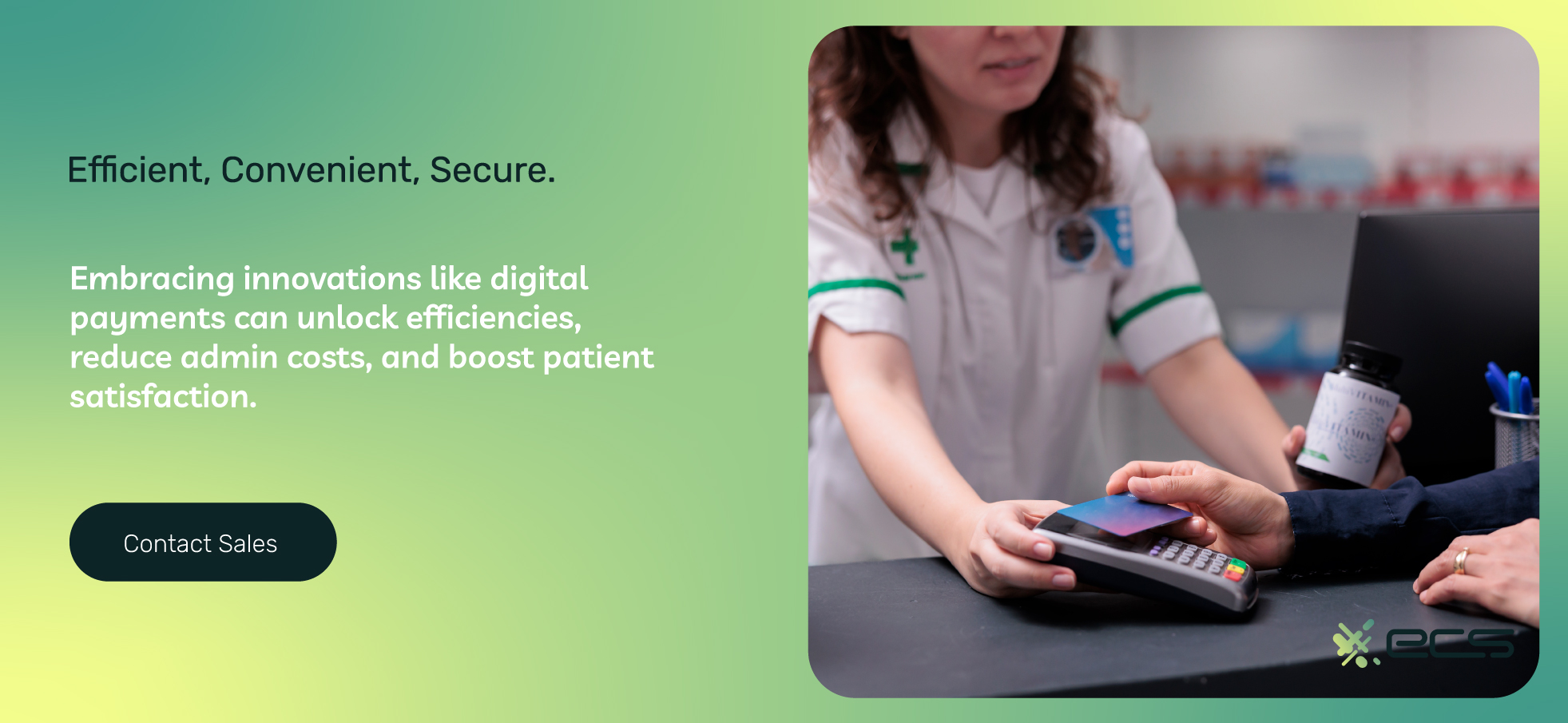
Phase In New Options
When adding new payment methods or especially new payment workflows, you want to use a sensible strategy to phase them in if necessary. This also includes phasing out any legacy methods of payments.
For example, if you plan to phase out mailing paper invoices, you need to do it in a way that provides patients with enough time to sign up for various other invoicing options.
Patients are more willing to accept and go along with changes when they have proper notification. It also puts much less stress on your staff as they must answer fewer questions.
As for phasing in new payment technology, it depends on what exactly you are adding. For example, if you add new card readers to accept Apple Pay or Google Pay at the reception area, you don’t have to phase that in. Simply install them and let patients know about the new feature.
However, implementing changes to billing notifications or payment collection methods may necessitate a more gradual approach and a phased roll-out over time until your existing base of patients become acclimated.
Communicate With Patients
Your practice likely already communicates with patients simultaneously. Usually, you do this via email for things like announcing new hours or schedule changes.
When adding new payment technologies, use your existing email system to educate patients on the changes. Similar to the in-office signage, you want to include how the new technology works, how patients can sign up, and the benefits of using the new payment technology.
Include links to your website within the email so patients can get more information.
Contactless Payment Methods For In-Office Payments
One of the easiest improvements to payment technology in your practice is ensuring you can accept mobile wallets for contactless payments. Examples of digital wallets are Apple Pay, Google Pay, and Samsung Pay, where customers can use their smartphones to pay with a traditional card reader.
Most newer card readers include this capability, and you can take advantage of these mobile payment apps if your practice’s billing management software is configured to accept them. Most modern office software apps have this ability.
Digital payment methods in the U.S., such as mobile wallets, are becoming increasingly popular among all age groups, although more so with younger patients. It’s not uncommon for people to not even carry their credit or debit cards anywhere as they rely solely on digital wallet payments.
Newer card readers can generally accept prepaid cards and other cards that may be part of your payment system or onboarding process.
Choosing the Right Digital Payment Method For Your Practice
Of course, you could try to implement every new payment technology possible into your medical practice and billing workflow. However, this is likely unnecessary and may cause too much trouble during the transition process.
Instead, you want to concentrate on the specifics of your practice or healthcare business and identify the areas where you can make the most improvements with the least effort.
This “low-hanging fruit” can be where you want to begin the transition into newer payment technologies.
For example, is your practice dealing with late payments for invoices? Are you sending out several statements before getting a payment or a response?
This is a common problem in the healthcare industry and can be costly for medical practices. Late invoices and re-sending invoices all cost money. It also can take time if your staff runs these manually or if they are only partially automated.
You would want to choose technology such as integrated payments or text-to-pay for this situation.
These could be combined with card storage either locally or, preferably, on the payment gateway.
Texting is so powerful because the open rate far exceeds that of email and has a better response rate than traditional paper invoices. Text messages have an open rate of over 95% within the first hour.
Most practice management software programs can easily integrate these two technologies. You may need to contact your vendor for more information if you are not currently using these features.
You’ll likely also need to contact your payment processor for information about your payment gateway. If you’re unsure how to integrate your payment gateway or need more options, contact ECS Payments. We offer expert advice on how healthcare businesses can leverage the latest payment innovations to save costs and boost efficiency.
Patient Portals
Another example is if a medical practice is dealing with inefficiencies with patient onboarding or long wait times in the office due to setting up new patients and handling payment information.
A patient portal can solve many of these problems. Most popular practice management software programs have these features either built-in or as an extra module.
A patient portal will allow new patients to enter critical information before visiting the office. This speeds up the in-office workflow tremendously. A patient portal also allows patients to look up statements and manage certain aspects of their care.
However, a patient portal also needs to be able to accept payments. This fully leverages the power of payment technology and a patient portal’s convenience.
You can achieve this by connecting the API of your payment gateway with your practice management software. Different programs will have different functionality built-in, but it’s important that patients can make payments directly through this portal.
Once set up, you can also send reminder emails or SMS messages that link directly to the portal. Patients must then sign in to make payments or set up their bank accounts for ACH transfers.
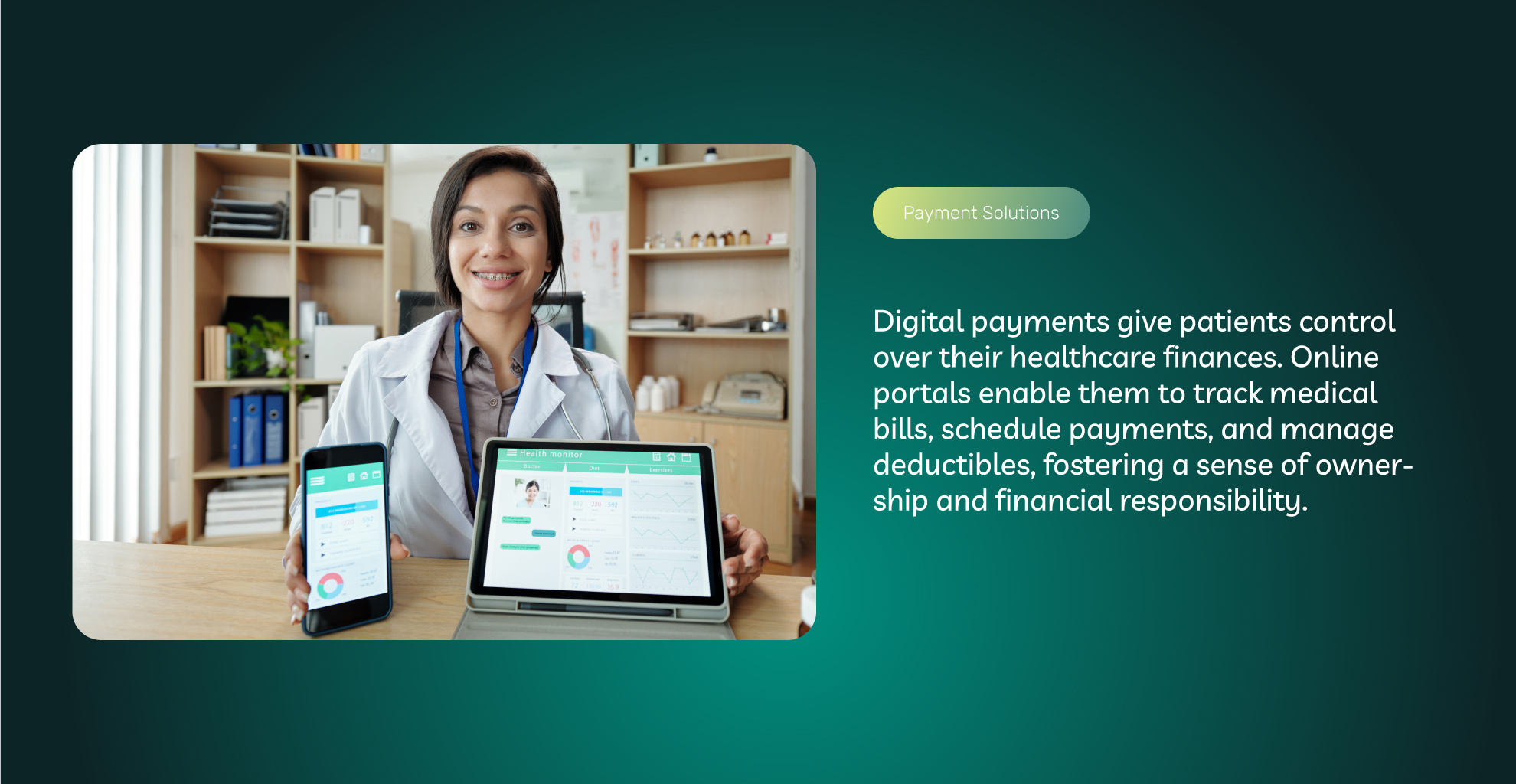
Choosing The Right Payment Processor
Much of the technology that can improve your practice and customer experience is only possible with the right payment processor and merchant account.
Some payment processors have limitations, and your current merchant account may not be compatible with the latest payment technology.
If your practice or healthcare business has a merchant account that doesn’t allow for some payment technologies we’ve discussed, it’s time to find a new payment processor.
This can be a rather easy transition, but making the right choice when switching is important.
Healthcare Industry Experience
You want to choose a payment processor that has healthcare industry experience. There are specific issues regarding healthcare billing and payment processing that need to be addressed. This includes the total transaction amounts and other aspects that sometimes put these in a high-risk category.
An experienced payment processor can help you find the best rates while offering all the tools necessary to integrate the latest payment solutions.
Payment Gateway Options
Depending on your practice management software or other office applications, you may need a specific payment gateway that works best with those programs. A payment processor that offers multiple payment gateways means you can choose the best solutions that fit your existing workflow.
It also allows you to take advantage of the tools offered by the various gateways, such as card storage or recurring/installment billing services.
Excellent Customer Service
This may be the most important aspect of choosing a new payment processor for your practice. Ensure your payment processor has in-house technical support to help you integrate these payment solutions into your current billing workflow.
Offering the technology is one thing, but only certain payment processors can walk you through any issues about integration or compatibility. Your payment processing, office software, and any financial institutions you work with must all work seamlessly.
Having experts available to help when needed is critical when implementing new payment technology. The last thing you need is to have issues when collecting payments, which can already be difficult in the medical industry.
Preparing For A Technology Transition
When you’re ready to switch to these new payment technologies, make sure to have a plan in place to do so. This helps create a seamless transition that offers almost no resistance at all.
First, you want to contact your payment processor and software vendors. Ask about the technology you plan to implement and how they can assist you.
We already outlined how to ensure you have a plan to educate your patients on how to use your new payment systems once implemented. This step should be completed well before the roll-out to ensure all your instructions are correct and match your payment technology.
Finally, you’ll likely want to conduct testing to ensure everything works as intended. For payment issues, your payment processor should be able to supply you with either dummy information or a way to test your processing without using actual patient information.
Similarly, your practice management software should have a way to test transactions or new features, but you will likely have to contact your vendor for specific instructions.
Get Started Today With the Best Digital Payment Method Offerings
When you’re ready to adopt the latest payment technology to help improve your billing, payments, and patient experience, you need a trusted technology partner.
ECS Payments is a leader in healthcare payment processing and financial services. We offer the latest payment solutions, from card readers to processing tools to store customer billing information and automate your invoicing.
Contact ECS Payments today and speak with one of our experts to learn more about our innovative payment solutions and how they can help lower your costs and improve patient experience.
Frequently Asked Questions About Patients and Payment Technology
Digital payment methods can lower costs, reduce staffing shortages, enhance the patient experience, and streamline the entire process of your business as a whole. To explore these benefits and learn how to implement them, contact ECS Payments.
Transitioning patients to new payment methods may require certain accommodations and educational efforts. Creating guides, videos, tutorials, and in-person education through staff can help even the least tech-savvy patients.
Payment methods such as SMS payments, virtual terminals, vaulted online card storage, and patient portals can improve your billing processes and enhance customer experience. To understand which methods are best suited for your practice and how to implement them, contact ECS Payments.
Choosing the right payment processor with healthcare industry experience is crucial to your success. Contact ECS Payments to learn how our years of experience and expertise make us the best options for your healthcare payment needs.
